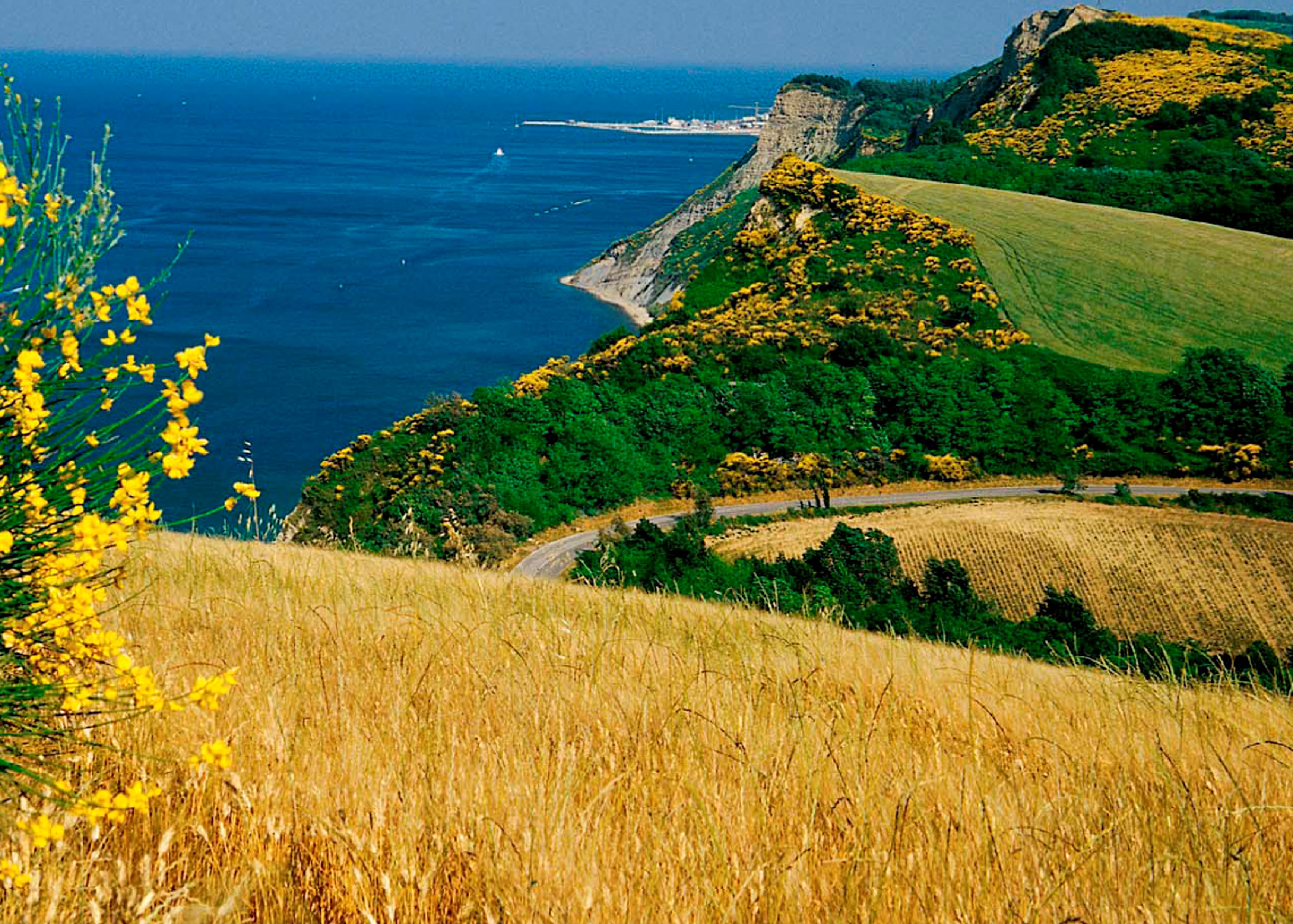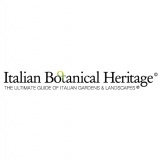
 Italian Botanical Heritage
Italian Botanical Heritage
Italian gardens and parks: Monte San Bartolo Regional Natural Park
- WTI Magazine #154 Aug 25, 2022
-

 Italian Botanical Heritage
Italian Botanical Heritage
Established in 1994, the Monte San Bartolo Regional Natural Park covers about 1,600 hectares in the province of Pesaro Urbino, along the coastal area and the hill ridge between the municipalities of Pesaro and Gabicce Mare.
Its territory presents a rather heterogeneous environmental mosaic, with very diverse plant associations, also depending on anthropic activity, including some cliffs and caves in the promontory, otherwise rare in the region. It is divided into two areas: the one between S. Statale No. 16 Adriatica and S. Provinciale No. 44 "Panoramica," and the one that stretches between the Strada Provinciale "Panoramica" and the coast.
The first, which accounts for 60 percent of the park, consists of an agricultural landscape, with fields of arable crops (autumn-winter cereals) alternating with fodder crops (alfalfa), surrounded by tree and shrub hedges, vineyards, and a few olive groves, as well as villages, villas, and castles. The second area coincides, for the most part, with the territory of the Cliff Floristic Area between Gabicce and Pesaro; the cliff and the beach are natural areas of great value, due to their outstanding geomorphological, vegetational and faunal features.
Fauna
Given the agricultural vocation of most of the Park's surface area, until the 1990s, the presence of medium to large mammals was always meager, until the roe deer, expanding throughout the province, arrived in San Bartolo, finding it perfect for its own survival precisely because of the mosaic of cultivated fields and groves. Other wildlife species present include the fox, which also reaches the beaches to feed on beached marine organisms, the badger, porcupine, weasel, hare, dormouse, several species of reptiles and amphibians and birds, including migratory ones.
Flora
It is very rich and includes rare species throughout the region, among some typical of the cliffs. The original forests, however, have disappeared or been reduced to small depleted patches due to some invasive woody species such as brambles and exotic black locust and ailanthus. Rare and localized in the least disturbed places, native trees and shrubs, including turkey oak (Quercus cerris), hornbeam (Carpinus betulus), hazel (Corylus avellana), Hungarian maple (Acer obtusatum), daphne (Daphne laureola), and Erica arborea, typical of mesophilic forests. In some areas, such as near the settlements of Santa Marina Alta and Fiorenzuola di Focara, coniferous forests (Pinus nigra and Pinus halepensis), planted in the twentieth century to counter hydrogeological disruption, are found.
Of note are the presence of Clematis viticella, uncommon throughout the region, Clematis flammula, a thermophilic species more common elsewhere, and the mastic tree (Pistacia lentiscus), a relict of an almost vanished Mediterranean vegetation. On the hard, compact arenaceous rocks, however, one encounters formations dominated by deciduous oaks such as downy oak (Quercus pubescens), while where the soil is wetter one notices small patches of white poplar (Populus alba) and lesser elm (Ulmus minor).
More interesting herbaceous floristic presence: In dry grassy places, roadside embankments or the edges of cultivated fields and fallow land, rare or uncommon herbaceous species (Geranium tuberosum, Tulipa agenensis , Tulipa clusiana, Tulipa sylvestris, Urtica urens, Orobanche picridis, Vicia lutea, Fumaria parviflora, many orchids such as Anacamptys pyramidalis, Orchis coriophora, Spiranthes spiralis, Orchis tridentata, Ophrys apifera, thermophilic and xerophilic species such as Aster linosyris, Fumana thymifolia, Galium lucidum, Ononis reclinata, Silene nocturna, Valerianella coronata, Valerianella muricata. In subruderal environments, alongside the many nitrophilous and invasive species, there are also species of some interest, such as Veronica cymbalaria, which is very rare throughout the region.
On the elevations, in the arenaceous outcrops, there are extensive shrublands of broom, along with common juniper (Juniperus communis), Colutea arborescens, brambleberry (Rubus ulmifolius), dogwood (Cornus sanguinea), Rosa canina, blackthorn (Prunus spinosa), hawthorn (Crateagus oxyacantha) and Etruscan honeysuckle (Lonicera etrusca), and, in some sections encroaching bramble shrubs.
At the foot of the cliffs, in the more riparian parts, little plants grow, including Lotus maritimus, Crithmum maritimum and, among the boulders of the cliffs Aristolochia clematitis and Solanum dulcamara. In the small stretches of beach one encounters psammophilous species that are now rare, including Eryngium maritimum, Cakile marittima, Salsola tragus subsp. pontica, Limbarda crithmoides and Calystegia soldanella. In Flaminia Bay, despite the strong tourist presence, nitrophilous and ruderal species survive in the older and more established sones of the strand, and rare species such as Hypochoeris radicata and Carex divisa.